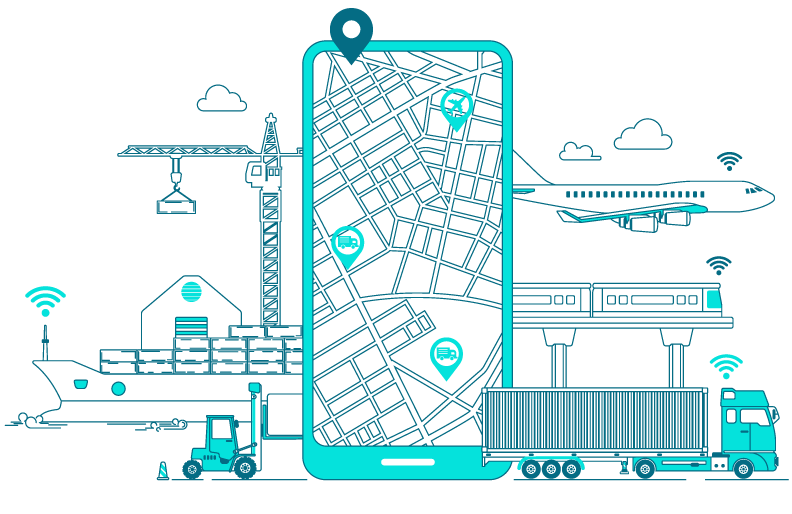Introduction
Effective transportation management is essential for organizations in the fast-paced world of today to ensure the smooth flow of goods and services. Transport Management Systems (TMS) have emerged as powerful tools that help organizations optimize their logistics operations, streamline processes, reduce costs, and improve customer satisfaction.

Understanding Transport Management Systems (TMS)
Transport Management System (TMS) refers to a software solution that assists businesses in managing and optimizing their transportation and logistics operations. From the point of origin to the final destination, it offers complete visibility and control over the transportation of commodities. Route planning, carrier selection, load optimization, freight audit and payment, real-time tracking, and reporting are just a few of the functionalities included in TMS.
Key Features of a TMS
- Order Management: TMS allows users to manage and consolidate orders, ensuring efficient load planning and optimization.
- Route Planning and Optimization: It helps determine the most cost-effective and time-efficient routes, taking into account factors like distance, traffic, fuel costs, and delivery windows.
- Carrier Selection: TMS enables businesses to choose the most suitable carriers based on their performance, rates, and service levels.
- Freight Audit and Payment: TMS automates the verification and payment of freight bills, reducing errors and discrepancies.
- Real-time Tracking and Visibility: TMS provides real-time updates on the shipment status, allowing stakeholders to track and monitor goods throughout the supply chain.
- Reporting and Analytics: TMS generates comprehensive reports and analytics, offering insights into transportation costs, carrier performance, and overall efficiency.
Different types of enterprises can use TMS
- Retailers: Retailers use TMSs to manage the transportation of goods from their suppliers to their stores.
- Manufacturing firms: Manufacturing firms use TMSs to coordinate the delivery of finished goods to clients and the transportation of raw materials to their operations.
- 3PLs: Third-party logistics (3PL) providers use TMSs to manage the transportation of goods for their clients.
- Transportation companies: Transportation companies use TMSs to manage their own operations.
Benefits of Implementing a TMS
- Cost Savings: By optimizing routes, consolidating shipments, and selecting the best carriers, TMS helps reduce transportation costs and improve resource utilization.
- Improved Efficiency: TMS automates manual procedures, decreasing errors, eliminating paperwork, and saving time.
- Improved Customer Service: With real-time visibility and accurate delivery estimations, businesses can provide better customer service, ensuring on-time deliveries and proactive issue resolution.
- Better Decision Making: TMS provides valuable data and analytics that empower businesses to make informed decisions regarding carrier selection, route optimization, and overall logistics strategy.
- Regulatory Compliance: TMS helps ensure compliance with transportation regulations and requirements, minimizing risks and penalties.
How to Choose a TMS
It is crucial to select a TMS system that is appropriate for your company because there are numerous TMS providers on the market. The following elements should be taken into account when selecting a TMS:
- What you specifically need: In what ways do you value people? What constraints on your finances do you have?
- The size of your business: If you are a small business, you may need a TMS that is easy to use and that does not require a lot of customization. If you are a large business, you may need a TMS that can handle a high volume of transactions and that can be customized to meet your specific needs.
- The functionality of the system: Make sure that the TMS has the features that you need, such as carrier selection and rate shopping, booking and tracking shipments, carrier management, cost management, compliance management, and reporting and analytics.
- The scalability of the system: If you plan to grow your business in the future, make sure that the TMS you choose can scale to meet your needs.
- The vendor’s reputation: Do some research to make sure that the vendor you choose has a good reputation and that they offer good customer support.
The process of supply chain management as a whole is significantly impacted by the use of a TMS
- Inventory Management: TMS provides visibility into inbound and outbound shipments, enabling accurate demand forecasting, inventory optimization, and improved order fulfillment.
- Warehouse Operations: TMS integrates with warehouse management systems, facilitating seamless coordination between transportation and warehouse operations.
- Collaboration and Communication: TMS enables real-time communication and collaboration between shippers, carriers, suppliers, and customers, enhancing coordination and reducing delays.
- Sustainability and Environmental Impact: TMS helps create a supply chain that is greener and more sustainable by reducing fuel usage, empty miles, and route optimization.
The Future of TMS
The transportation industry is constantly evolving, and TMSs are no exception. As new technologies emerge, TMSs will need to be updated to keep pace. Some of the emerging trends in TMS technology include:
- Artificial intelligence (AI): AI can be used to automate tasks such as rate shopping and carrier selection, freeing up employees to focus on other tasks. By offering insights into the data related to transportation, AI can also assist organizations in making better decisions.
- The Internet of Things (IoT): IoT devices can be used to track shipments in real time, providing businesses with visibility into their transportation operations. IoT devices can also be used to collect data about transportation conditions, such as weather and traffic, which can be used to optimize shipping routes.
Conclusion
Modern logistics and supply chain management depend greatly on Transport Management Systems (TMS). TMS optimizes transportation processes, lowers costs, increases efficiency, and boosts customer satisfaction by utilizing cutting-edge technology and automation. Implementing a TMS empowers businesses to make data-driven decisions, optimize routes, select the best carriers, and achieve end-to-end visibility into their supply chains. In an increasingly competitive and globalized market, a robust TMS can be a game-changer for organizations looking to stay ahead in the logistics landscape.

